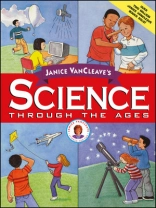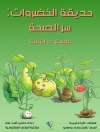How much would you weigh on Mars?
What can exploding balloons tell us about weather?
Why do heavy ships stay afloat on water?
How can you lift an elephant with one finger?
You’ll discover the answers to these and many other fascinatingquestions when you journey through science history with Janice Van Cleave as your guide. Packed with fun facts, activities, andexperiments, Janice Van Cleave’s Science Through the Ages introducesyou to the amazing stories behind some of the greatest scientificdiscoveries of our time. Each chapter provides easy-to-followinstructions for hands-on experiments, as well as clearexplanations that reveal the many ways science has helpedpeople–from ancient times right up through today!
You’ll find out how to use Stone Age tools to make art, build asimple telescope, look at your own blood vessels (did you know youhave thousands of miles of them?), construct a stethoscope, createa model of Galileo’s gas thermometer, and much more. As with all of Janice Van Cleave’s books, the materials are safe, inexpensive, andeasily found around the house. So take a time-traveling tour ofdiscovery and get ready for hours and hours of fascinating sciencefun–at home or in the classroom.
Table des matières
Acknowledgments.
Introduction.
PAST TO PRESENT.
History of Science.
Stone Age.
Bronze Age.
Iron Age.
Industrial Age.
ASTRONOMY.
The Universe.
Calendars.
Telescopes.
Planetary Motion.
Gravity.
BIOLOGY.
Plants.
Anatomy.
Circulatory System.
Preserving Food.
Stethoscope.
CHEMISTRY.
Chemical Reactions.
Alchemy.
Oxidation.
Soap.
Dyes.
EARTH SCIENCE.
Atmosphere.
Earth’s Shape.
Thermometer.
Compasses.
Air Pressure.
PHYSICS.
Rubber.
Buoyancy.
Magnets.
Energy.
Flight.
Glossary.
Index.Glossary.
Index.
A propos de l’auteur
JANICE VANCLEAVE is a former science teacher who now spends her time writing and giving science workshops. She is the author of more than forty books that have sold over two million copies, and a resident science fair authority on Discovery.com.












